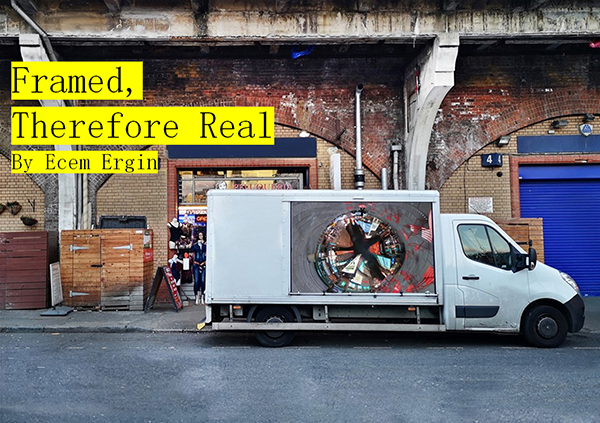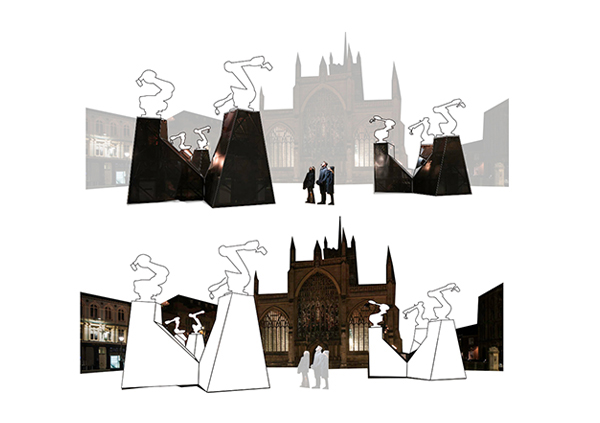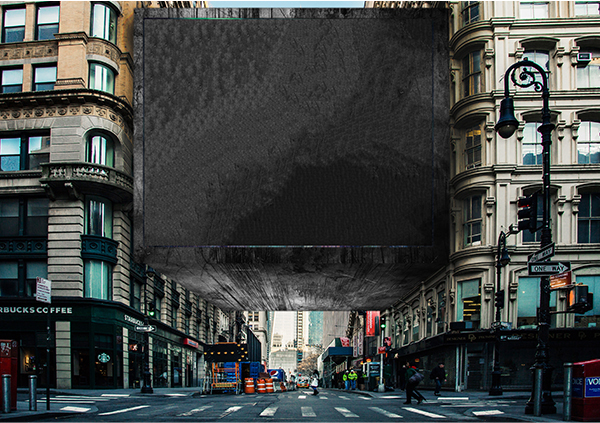- Framed, Therefore Real (PhD Research)
-
Do you think architectural space makes people believe in something they would not believe in otherwise? This research explores the role of architectural space in conveying a message in both forms: physically situated and virtually distributed. Times Square of New York is used as the case for the investigation. The research aims to contribute to the debate around the trustworthiness of digital media and the importance of the urban environment as an informer of the publics.
Since the 1960s “The medium is the message”, as McLuhan stated, but with the rise of the post-truth era, perhaps his definition requires an update. Due to lack of legislation in the virtual world, one might say media has started to refer to an uncanny territory. Intentionally or not, the logic behind new communication platforms has been promoting speculations rather than facts. On the other hand, the variety of the content an individual is exposed to in a regular day has reached an unprecedented diversity. Moreover, the erosion (even absence) of the narrator of these messages has been causing a legitimisation problem. Here the policy makers may contribute as fact-checkers in the form of the physical public spaces. In other words, physical public spaces might be used as legitimisers of the messages that appear in them, because the governance and legislation of the built environment -albeit with some flaws- is well widely recognised by the public. This PhD research unfolds the potential outcomes of this correspondence.


Ecem Ergin, Andre G Afonso, Ava Fatah Gen. Schieck
The kinetic installations -- comprising a set of orange robotic arms, light sources, mirrors and soundscapes -- performed spatial and temporal rhythms in four different urban settings across Hull's Old Town. We investigate the installations as an attempt to clarify:
a) the visual and auditory impact of the robots on the surrounding environments;
b) the social impact of the performances on each setting; and
c) the temporal impact of the performances on the social behaviours and experiences around the robots.
The results of the study suggest that, in the context of outdoor urban settings, people tend to perceive robots as kinetic sculptures more than as urban installations. We contribute to the discussion around pervasive displays by considering kinetic robotic installations as an emergent type of urban displays, with potentially lasting effects on the experience of city environments. We address and chart constraints and challenges for urban environment of the future.
The Installation is designed by Jason Brugge Studio.

Relationship between architecture, art and technology has changed in the last decade. Architecture has the most flexible exis¬tence by being a background and being the major informative of the other two. At the same time, technology and art can be overlapped to inform architecture. The critical point of the situation is materiality of space. The main consideration of this dissertation will be to find the fine line between materiality and immateriality to erase it to let them diffuse in each other. This diffusion is important, because only then the material sources of the immaterial productions can be ignored. Although, music is created by some solid tools, its experience reaches the listener without any substance. Likewise, without seeing the unique representation of a painting we can understand the context from screens. Despite screens are tools to show us information, what we see is the light without any substance, too. Hence, the idea here to design a system that can create a perception of the material with immateri¬ality to shift the meaning of “the real”.
Performances are linked to the slice of time, which they are performed in. The experience is captured by minds, and the rest diffuses to the time span of the performance. Then, a question appears: Can we break down the relation between time and architecture to create another way of understanding? To copy, to multiply, to distribute are the keys to become regular.
